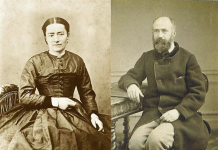
WOODEENE KOENIG-BRICKER
When we think of “saints,” we don’t always think about people from the Bible—especially not those from the Old Testament. This thought may be due to the fact that the word “saint,” which comes from the Greek and means “to be holy” or “set apart,” was originally applied to living people. It was only after the Christian Church had been well-established that the term was given to—and reserved for—those who had died in the Christian faith.
That doesn’t mean, however, that there aren’t saints in Scripture! To help your students recognize that the people in Bible stories are really saints, start by explaining what a saint is.
Saint Defined
A Saint, with a capital “S” is, according to Catholic tradition, a person who has been officially recognized by the Church for his or her holiness and virtue and is believed to now be in heaven. Before the formal canonization process was created, people who led lives of great holiness were informally acclaimed to be saints. St. Hildegard of Bingen, for example, was considered a saint for centuries, but only canonized in 2012.
Because we believe that many figures from the New Testament are in heaven, we refer to them as saints, including St. Paul and St. Peter. But that doesn’t mean that Old Testament figures, such as David and Moses, aren’t in heaven, even though we don’t usually use the word Saint before their names.
Honored as Saints
The Catechism of the Catholic Church tells us, “The patriarchs, prophets, and certain other Old Testament figures have been and always will be honored as saints in all the Church’s liturgical traditions (CCC, 61).
Just as we might ask a friend or family member for help, we can ask a saint for help, too. We can ask the saints in heaven to intercede for us by praying to God on our behalf. Explain to your students that when we pray to saints, we are always asking for their intercession, not worshipping them as we do our God.
Woodeene Koenig-Bricker is the author of numerous books, including 365 Saints and 365 MARY, and is the senior editor of a women’s Bible. She has helped develop curriculum for both youth and adult faith formation programs and has taught RCIA in her parish.
Photo credit: Samantha Sophia on Unsplash




